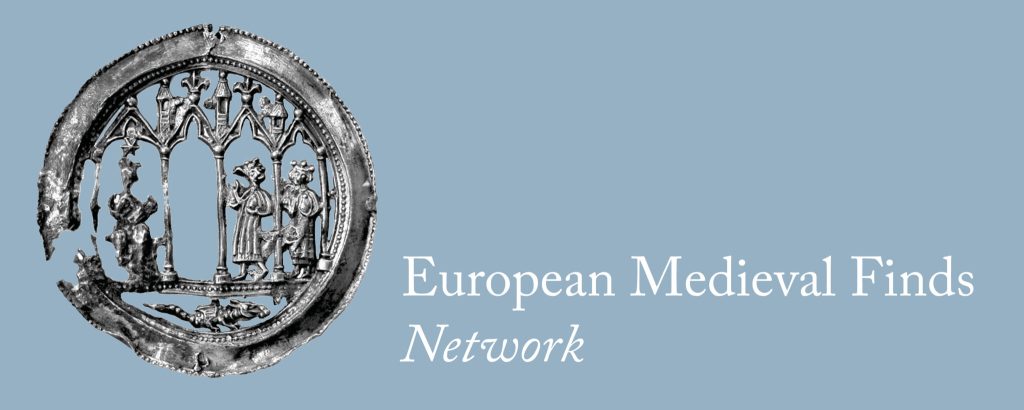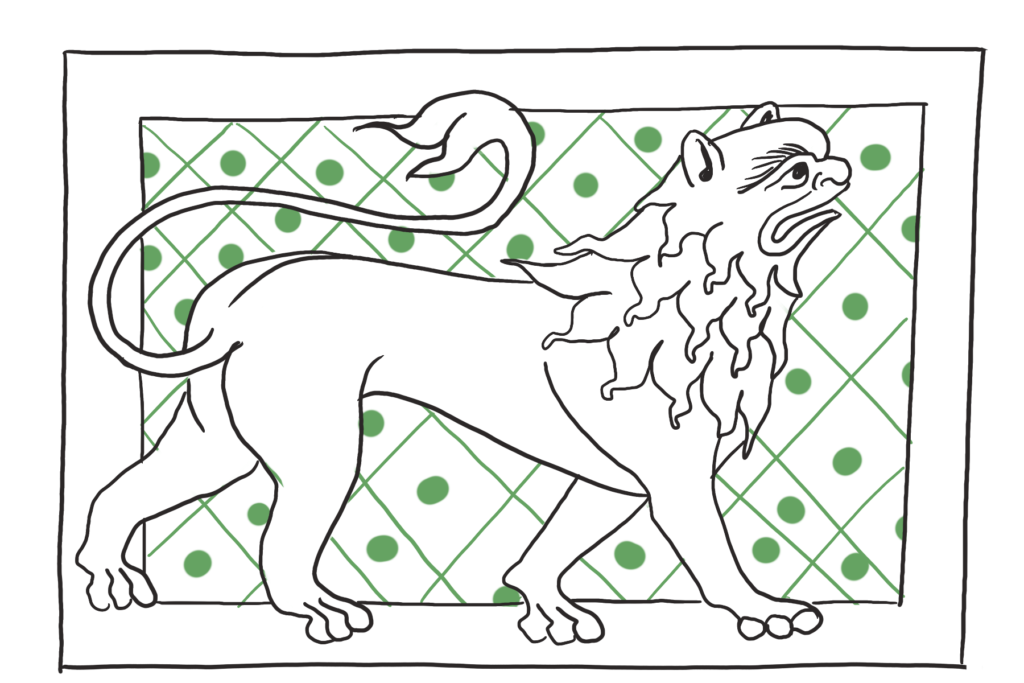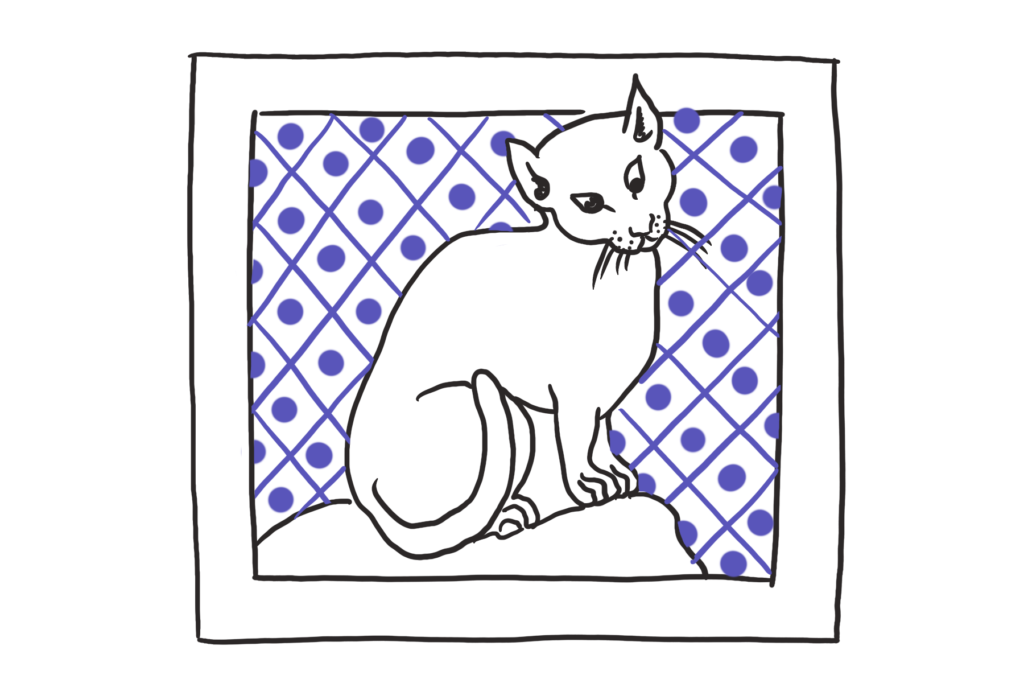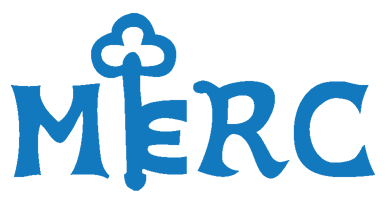
European Medieval Finds Network – origins of the idea
The idea for a European Medieval Finds (EMF) network – to bring together people interested in medieval small finds – originates from sessions organised at ‘annual meetings’ of the European Association of Archaeologists (EAA) between 2018 and 2022. These explored what makes Europe united (or not!) in terms of its material culture. All but the 2018 session was sponsored by the Medieval Europe Research Community (MERC). Some papers given in these sessions have been published (by Springer) in the volume A United Europe of Things (2023) edited by Jakub Sawicki, Michael Lewis and Maria Vargha, and there are plans afoot for a second volume (2025).
EAA sessions
The first EAA session ‘Interpreting and Understanding the Past through Medieval Small Finds’ (Barcelona 2018) was organised by Michael Lewis (United Kingdom), Mirjam Kars (Netherlands), Mette Højmark Søvsø (Denmark) and Jakub Sawicki (Czech Republic). This was our first attempt to better understand who was studying medieval small finds within Europe and the EAA community. We were primarily interested in methods being used to understand and interpret these finds, and the relationships between finds types. Most of the papers were focused on north-west European material culture. A second foray (Bern 2019), organised by Lewis and Sawicki, sought to explore whether there was a common horizon in European material culture, looking specifically at the high Middle Ages (1300-1500). Again, many of the papers had a north-west European focus, and the conclusions were quite mixed.
The COVID-19 pandemic of 2020 interrupted plans for a third EAA session on ‘a united Europe of things’, prepared for Budapest by Sawicki and Lewis (as above) with Mária Vargha (then based in the Czech Republic, now Austria). Here our aims were similar to the session in Bern, but with a special focus on understanding material culture within wider European sphere (i.e. outside western Europe). This postponed session took place the following year in Kiel, albeit virtually, but the objective of hearing more about the material culture of other parts of Europe was achieved. A fourth EAA session (Budapest 2022) – also organised by Sawicki, Lewis and Vargha – explored reintegration, but also sought to share ideas and thought processes on the study of medieval small finds. Here the chronology was also widened (from an end date of c. 1550 to c. 1700) enabling us to take a broader view on European material culture. By this stage, plans were already in place to bring some of these papers together within a printed volume.
The most recent EAA session exploring ‘a united Europe of things’ took place in Belfast (2023), where there was a notable shift on papers from Western Europe to Central (Eastern) Europe, including (for the first time) papers from Austria and Russia. It is notable – probably due to laws regarding metal-detecting – that contributions from Southern Europe have been absent, and this is something we are keen to address. Discussions at the EAA show a clear scholarly interest in medieval small finds, but also that state of knowledge and expertise is dispersed. As a result, are establishing a pan-European medieval small finds research group (European Medieval Finds network: https://ypp.com.pl/emf/), which besides holding regular basis thematic sessions at relevant conferences, looks to promote research in this area and bring together people interested in medieval finds. Indeed, there is much to be done in terms of the study of medieval material culture and – by working with a wider community of professionals, hobbyists, and history lovers – share that with even more people.
Michael Lewis, Jakub Sawicki and Mária Vargha (based on the Preface to the first United Europe of Things volume (2023).
EMF aims
Challenges
We recognise the following issues with the study of medieval material culture especially with small finds:
Opportunities for Pan-European collaboration
We see following topics as especially promising in their international scope:
You can join us (FREE) at

Michael Lewis
heads the Portable Antiquities Scheme (PAS)—a project to record archaeological finds made by the public in England and Wales (see www.finds.org.uk)—and oversees the administration of the Treasure Act 1996 by which the most important archaeological finds end up in public collections. He is also a Visiting Professor in Archaeology at the University of Reading (United Kingdom) and in Social Sciences at the University of Helsinki (Finland), and a founding member of the European Public Finds Recording Network. For five years he was a Special Constable with the Metropolitan Police Art & Antiques Unit, and maintains an active interest in law enforcement in relation to heritage crime. He is a member of the National Chief’s Police Council Heritage & Cultural Property Crime Working Group and an advisory member of the All Party Parliamentary Archaeology Group in the United Kingdom. Michael has written widely on medieval material culture, specifically metal small finds associated with everyday life and religion, and the Bayeux Tapestry; the latter was the subject of his doctoral research. He was co-curator of the British Museum’s international touring exhibition ‘Medieval Europe 400–1500’ and is a member of the Comité scientifique Tapisserie de Bayeux, advising Bayeux Museum (France) on the redisplay and reinterpretation of the embroidery.

Mária Vargha
obtained her her PhD from Central European University from Medieval Studies in Budapest. After working four years in the Digital Humanities unit of the Institute of History at the University of Vienna, she is currently employed as a researcher at the Department of Archaeology at Charles University, Prague, where she is the PI of the project ‘Empowering the Voiceless. The Role of the Rural Population in State Building and Christianisation in East-Central Europe’, conducted within the PRIMUS scheme, and the Lead Agency WEAVE tri-lateral project REPLICO in cooperation with the Naturhistorisches Museum Vienna and the Slovenian Academy of Sciences. She has also obtained an ERC StG grant titled RELIC ‘Religiopolitics – The Imperium Christianum and its Commoners’, with which she returns to the University of Vienna. Her research is mainly focused on the material culture, social and landscape archaeology of the High Middle Ages, and Digital Humanities, with a particular focus on GIS and network analysis of diverse archaeological and historical data.

Jakub Sawicki
earned his PhD in archaeology at the University of Wrocław (Poland), studied in Germany at Christian Albrecht Universität zu Kiel and was a fellow at Laboratoire de médiévistique occidentale de Paris at Université Paris 1 Panthéon-Sorbonne (France). Currently, he works as a researcher in the Department of Historical Archaeology at the Institute of Archaeology of the Czech Academy of Sciences in Prague. Jakub is treasurer of Medieval Europe Research Community (MERC) in which he actively works on organizing conferences for younger researchers and other activities related to the popularisation of medieval archaeology as well as the integration of the scholarly community. He gives lectures on medieval material and symbolic culture at Charles University (Czech Republic). He has published widely on those topics, including the production and consumption of dress accessories and the archaeology of pilgrimages and narratives on archaeological artefacts. He has also led a project on ‘Dress Accessories and Social Life in Central Eastern Europe’ funded by Czech Grant Agency. Currently, he is involved in research on luxury, standards of living and poverty in early modern Central European urban centres and on craftsmen preferences between Prague and Paris.

Privacy Policy
The data administrators are the founders of the EMF Group. The contact data are used for non-commercial and scholarly purposes only.
Supporters


The website has been designed and is maintained free of charge by Yellow Point Publications